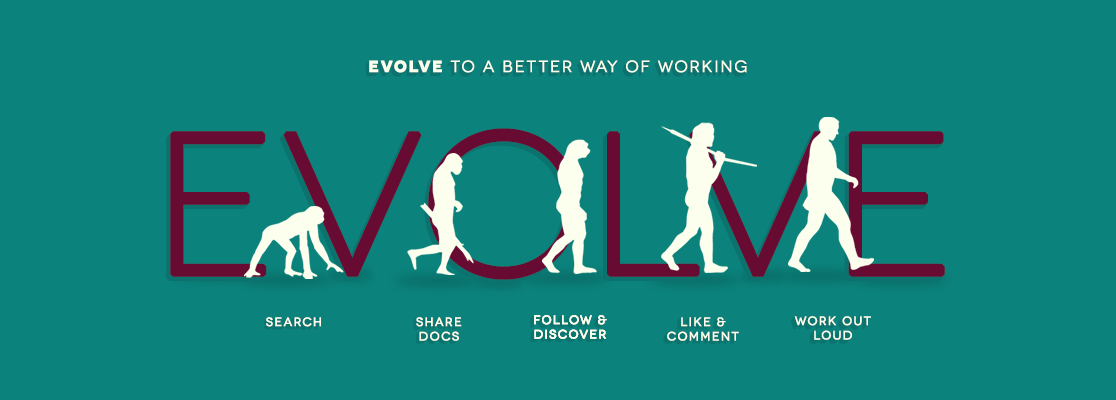I spent the greater part of the weekend mulling over the practice of working out loud, what makes some folks adopt the habit with ease while others struggle, and what could be some of the possible enabling factors that support working out loud. The more I thought about it, the more it seemed to me that it is one of the fundamental blocks of building a community of practice. A community grows around a domain where practitioners share their insights, knowledge and doubts, the work processes. A community grows through conversation, collaboration, and showcasing of work in progress. Community members learn together, share feedback, take onus of building the domain. Explicit and tacit knowledge gets shared. Take Linux or the GitHub community for example. Talented coders and developers come together to learn, share and co-create. The more evolved and engaged a community is, the more it acts like a “talent magnet”. Even as I was mulling over and revisiting my old posts on the importance of communities, serendipity struck. I came across this post by +Abhijit Bhaduri – Talent Communities Must Go Beyond Hiring. Organizations like Google and Apple have become such talent communities attracting the best of the best in their areas of expertise.
Today, most organizations are caught between the crossroads of traditional training (top down sessions, expert created content, L&D owned programs) and the modern workplace learning practices reflective of networked learning, collaboration and cooperation, user-generated content, ongoing conversation and debate, open feedback and transparent sharing. If we critically examine the characteristics of networked learning, it becomes evident that these are also qualities that foster and enable communities to thrive which in turn pull creative, passionate individuals to the workforce. As Bhaduri points out in his post, communities have always attracted talent. The spirit that drew writers and thinkers to the smoke filled iconic Coffee House of Kolkata is the same spirit that draws people together in communities.
The fundamental characteristics of individuals who formed these communities were their willingness to share their thoughts, view their ideas, express half-baked opinions and begin conversations – in short,working out loud or “showing their work”. This begs the question – how does one inculcate the habit ofworking out loud and inspire the passion so that people will want to continue doing so. I blogged aboutGetting Started with Working Out Loud. In this post, I want to focus on the support and environment needed to get people started. I am going to continue using the Coffee House analogy here and there.
Making Working Out Loud Happen
1. Safe Environment – How comfortable do people feel sharing their doubts and half-baked ideas? Is there fear of ridicule? Given that the organization culture encourages sharing and transparency, it still takes some effort to create a community space that is safe. This is where a community manager can be indispensable. S/he can be a coach and mentor helping people to get started with working out loud, keep the community space free of trolls, and connect individuals to each other and to relevant content/discussions/groups. When individuals see others (especially those in positions of authority and leadership) revealing their vulnerabilities and fears, a safe place is automatically created. It encourages deep conversations, honest feedback and authentic support.
2. Inspirational Role Models – There are always a few early adopters and trend setters. These individuals are not scared to take a leap and start something new, no matter how silly it may seem to others. They are not afraid to seem weird. However, typically this forms a small percentage of any employee base. The majority prefer to wait and watch before jumping onto the bandwagon. They wait for approvals. The latter need strong role models whose behaviour they can emulate, whose successes and failures are out there for all to see. Each organization will need to find a handful of such people who will demonstrate the habit of working out loud fearlessly for others to follow, who will be the champions. If these happen to be from the senior management, so much the better.
3. Meaningful Conversations – Most often, organizational learning gets locked up as a conversation between 2 or 3 people in their inboxes. When these individuals leave their organizations, they walk away with their tacit knowledge. Their inbox is deleted. The exchanges are lost. The same conversation practised in the open not only invite wider participation, diverse thinking and contribution but is also of immense benefit to others. The organizational hive mind gets captured, context is built and conversation takes place. We all know that true learning takes place through dialogues.
4. Easy Entry and Participation – In Coffee House, participation amounts to pulling up a chair at the table of choice, ordering chai and perhaps the ubiquitous cutlet to accompany the discussion. Some folks at the table would know you and some wouldn’t. Introductions get casually made. What matters is the participation and the contribution. In the online world, this ease can be created by a community space or platform that is easy to access, like Twitter or Yammer. Some help from a community manager in the case of an enterprise community is helpful. Organizations looking to inculcate the practice of working out loud in their employees will need to provide the support, perhaps with L&D acting as facilitators.
5. Beyond Information Sharing – “Working out loud” is not about sharing information. That can be better achieved via reports, datasheets, and meetings. It is about providing the context to the information, the exceptions to the processes, the failed attempts and successes. It’s about sharing “how” one arrived at the outcome, not only the “what”. When the moving parts, the complexities and the exceptions are openly discussed, conversation automatically happens. People get an opportunity to chime in with their opinions, experiences and solutions thus leading to innovation, co-creation of new knowledge and a better informed community. This kind of sharing is generative leading to improved organizational know-how.
6. Thinking Cooperation – One of the objectives of working out loud is to share our work in progress, show the “how” we do it rather than only the what, and expose the processes behind the outcome. However, we expect and seek responses to what we share. The reality is this may not always happen, and at least not instantaneously. Jeff Merrell makes a very valid point in his post Working Out Loud Lesson: Ignore the Network:
“We write with the full expectation that the network will respond. That’s supposed to be the value of the network, right? It gives us something when we give it something.But I’ve just found that the network is fickle. And I am ok with that.By definition, serendipity happens by chance. If it were predictable it would be no fun.”
That is the crux. It is easy to lose motivation when no one responds. However, we never know when serendipity will take place. It is about being consistent, about showing up and sharing. Apart from anything, working out loud is a valuable self-reflection and learning tool. And cooperation is the key.
7. WOL is a Mindset, an Attitude – Working out loud is not dependent on an individual’s savviness with various social sharing platforms. It’s a mindset. We can all remember classmates who willingly shared how they had worked out a math problem and those who wouldn’t. WOl comes from the same attitude of sharing with the intent of helping others learn from what I know and the mistakes I’ve made. As Nigel Young aptly writes in his post, When Working Out Loud isn’t Really WOL:
WOL…is a practice and I do this in the office, on my whiteboard, in the collaborative tools I use and even when I speak (I’ve been known to form new ideas, change them and take new directions whilst actively involved in conversation). This comes partly back to my previous point that WOL is an attitude and partly down to the fact that the media for sharing and collaboratively working is less important than the action.
Finally, here is a check-list from Austin Kleon from Show Your Work:(Banner Image Reference: http://johnstep
Written by our Guest Blogger, Sahana Chattopadhyay
Sahana Chattopadhyay is an L&D Consultant, OD Specialist, Blended Learning Architect, Social Learning Evangelist, and Blogger.
Sahana’s work cuts across performance consulting, workplace learning strategies from formal to informal and social learning, knowledge management methodologies and adult learning principles. She is passionate about helping organizations become learning organizations through community building, enabling personal knowledge management, and bringing working and learning together.
Sahana has appeared in the list of Top Ten e-Learning Movers and Shakers for the Asia Pacific region for four consecutive years from 2011 to 2014, topping the APAC list in 2014 and appeared in the top ten of the global list.
_________________________________
Copyright of posts written by our Guest Bloggers are their own.
Published on 06-Jul-2015






